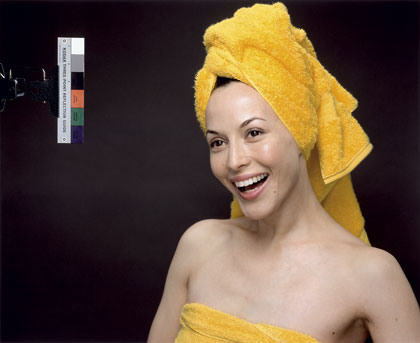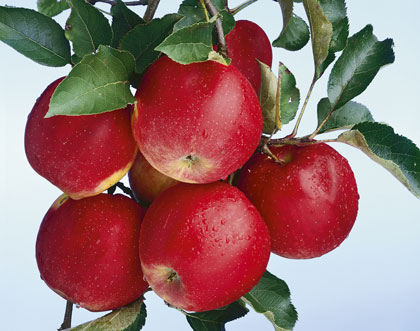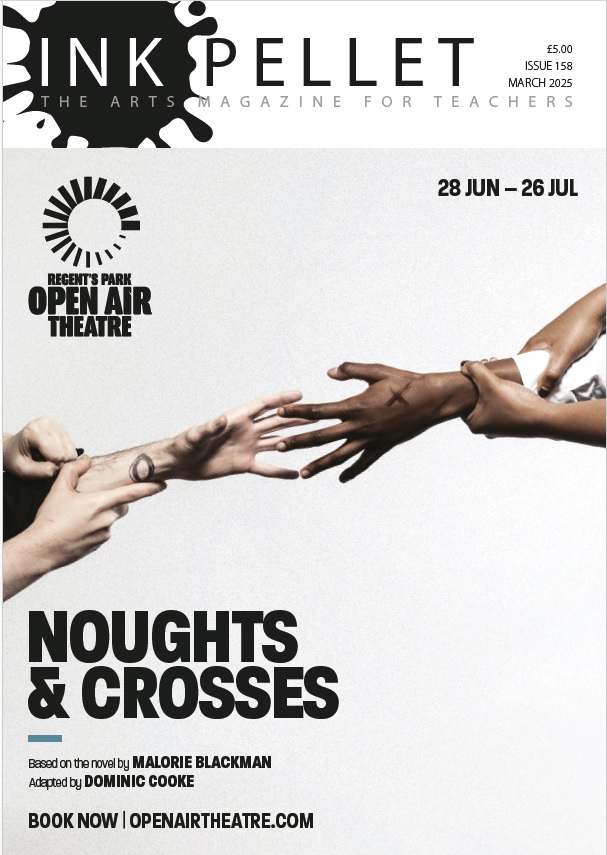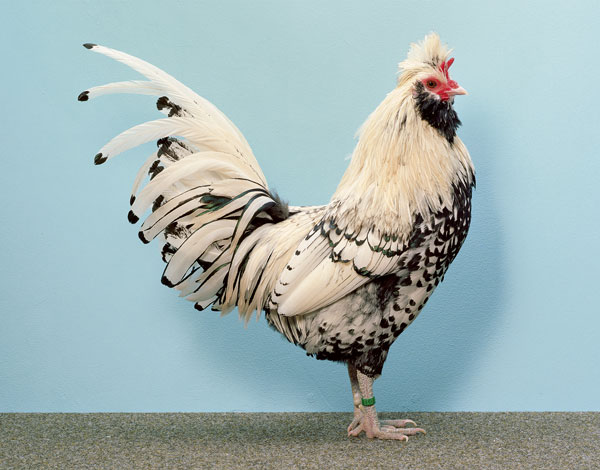The first survey in the UK of American artist/photographer Christopher Williams’ work is currently showing at the Whitechapel Art Gallery in London. GRAHAM HOOPER investigates an exhibition where nothing can be taken for granted.
Christopher Williams stretches the definition and role of photographer so that it becomes more akin to that of a film director or music conductor, rather than a person who makes art for display in a gallery. He doesn’t necessarily take the photographs himself for instance. He might carefully instruct a technician with precise directions for the creation of an image he wants or needs. It is not unusual for an artist to sub-contract out work in this way – just as an architect wouldn’t also be the builder. Artworks nowadays are often so complex and demanding in terms of materials and scale that it would be impossible or simply too time-consuming to do the work yourself. Artists see themselves increasingly as being people that have ideas that are then executed to their design and exact specification. Indeed isn’t that the way we buy other services and goods?
Christopher Williams is American by birth, and studied in Los Angeles under the likes of artist John Baldessari, famous for his conceptual approach to photography. One of Baldessari’s artworks involved throwing four balls up into the air with the aim of creating a square (one ball in each corner). The (best of) 35 attempts are recorded on a single film (one per exposure on the roll). The approach is scientific, playful, intellectual, philosophical and inane, all at the same time.

Kodak Three Point Reflection Guide, ©1968 Eastman Kodak Company, 1968, (Meiko laughing), Vancouver, B.C., April 6, 2005. 2005 Ringier Collection, Switzerland
Significantly, Christopher Williams teaches photography at an art school in Germany (Düsseldorf) which has long been associated with a very particular approach to photographic image-making. One which emphasises personal vision, technical clarity and documentary methodology. His images bring together an understanding and awareness of both American (West Coast) and German sensibilities; the style, the look, the feel, the attitude.
For this current retrospective called ‘The Production Line of Happiness’, Christopher Williams has created two exhibition catalogues, each in one of three different colour schemes, in keeping with the three venues that this show has travelled to, but also as an allusion to the three colours associated with the film types he has explored as part of his work (Agfa is known for its red sensitivity, Kodak for its yellow and Fuji for its green rendering). The two books differ in that one contains only text (no images, and then only essays, documents and associated written material that links to his work), the other having only the images (with no writing whatsoever, even captions, except for the ’titlet, Made in Germany, only used as necessary to allow for international distribution). Interestingly, the words-only version costs around £25 whilst purchasing the pictures in book form (twice the thickness) is just over £50.
Christopher Williams has created images (in his most recent work) that are about photography, exhibitions, galleries, looking, display and catalogues. Some of the photographs are even of cameras and lenses, as they might appear in sales literature. But the equipment is obsolete or Cold War copies of high-quality professional outfits, and all recorded painstakingly on film. The lenses shown are factory cutaways that reveal the intricate inner workings of the design, like visual metaphors of the exhibition itself. His pictures are self-referential and cross-referenced.

Bergische Bauernscheune, Junkersholz, Leichlingen, September 29, 2009. 2010 Private Collection, Belgium
Christopher Williams’ images (over 50 of them spanning the last 35 years) are suggestive of commercial, industrial or instructional brochures, magazines and manuals. Often the subject matter shown are of everyday items; tyres, flowers, cameras and apples. They are pristinely printed and carefully displayed. However, when the photographs are closely inspected, we often notice that there are flaws in the subjects; the bruise on the apple, the dirt on the model’s feet. The attention to detail reveals the beauty of mistakes.
Christopher Williams has taken photographs of people that look like outtakes from photoshoots. The model appears off-guard and caught unawares. The colour test chart in the corner of the photograph informs us very clearly that this is a studio environment. The close up image of the dented car is beautifully rendered in focus and colour. The dent, which has not broken the paint surface, looks too good to be true. The photographs call into question our sense of reality, authenticity and truth, all qualities that have historically been associated with photography.
Christopher Williams has played with our idea of how things can and should be exhibited. The décor and signage of the Whitechapel’s previous exhibition (about the history and relevance of abstract art) has been partially left visible, whilst his images appear, at a height lowered than is conventional, devoid of any captioning. Some of the images are even displayed on walls literally taken from their previous gallery setting. The result is a witty, immersive, playful, though at times a rather disorientating, experience.
Christopher Williams has produced an exhibition that feels like a game-changer. It is about itself, and everything else. It takes into account not just the images but how they are displayed. It asks more questions than it answers. It mixes genres and functions. The photographs are as intellectually stimulating as they are visually seductive. It bridges the traditionally separate areas of commercial and artistic imagery. The title of the show alludes to a factory for fun, the construction of desire. Should I feel afraid or joyous?
Christopher Williams has left me ambivalent about everything. On leaving I exclaimed to an exhibition assistant that I thought the work was so challenging and provocative for photographers, galleries and visitors alike, that it was difficult to see where to go next. She said, “Upstairs…the exhibition continues upstairs”. Without any sense of irony, but perhaps she had misunderstood what I meant. On second thoughts though, perhaps I had misunderstood what we meant.
The Christopher Williams retrospective ‘The Production Line of Happiness’ is at the Whitechapel Art Gallery in London, until 21 June 2015. The gallery is open from Tuesday to Sunday, from 11 until 6pm (Thursdays until 9pm), and is free to enter. The nearest tube station, just a 30 second walk, is Aldate Gate East on the District and Hammersmith & City lines.
Graham Hooper is an artist, educator and writer living and working in the UK.



